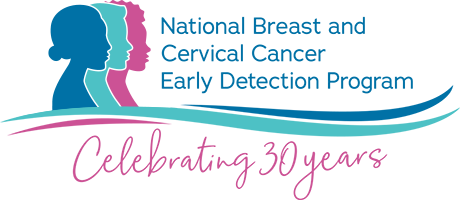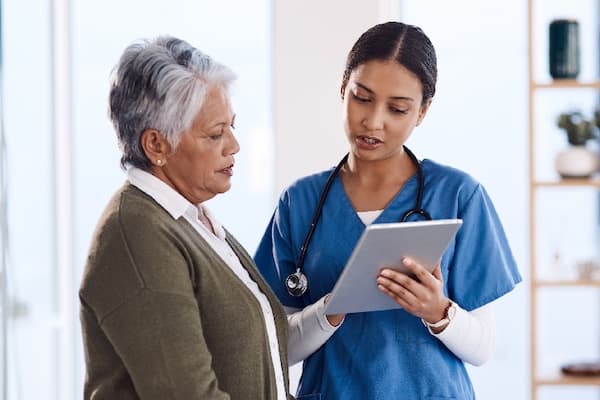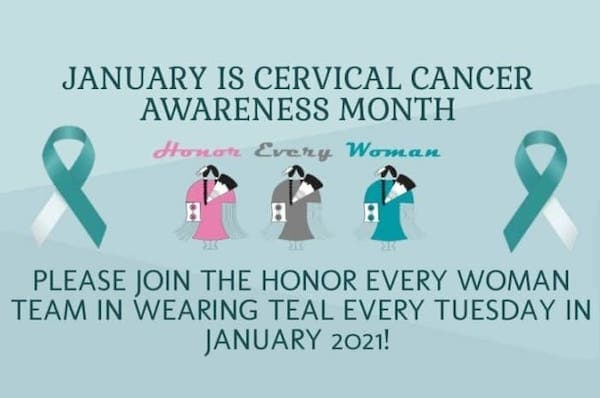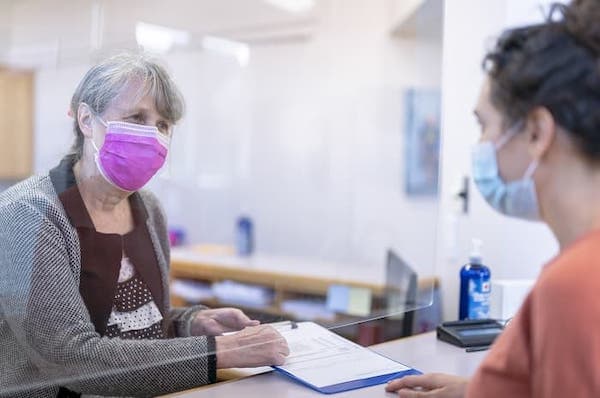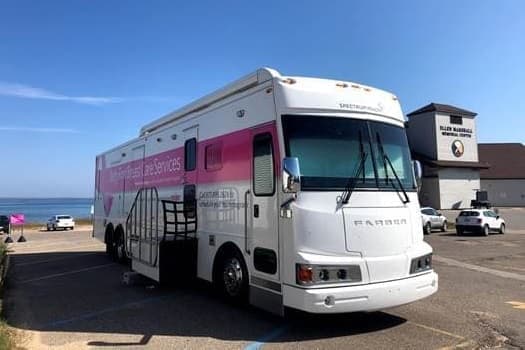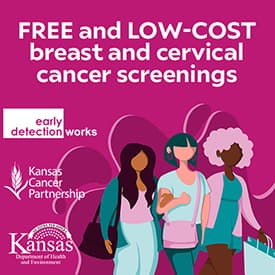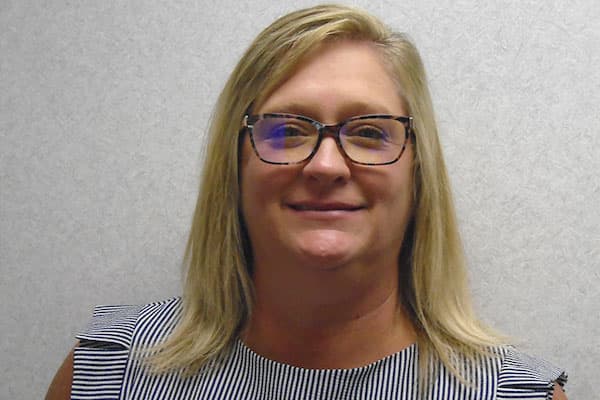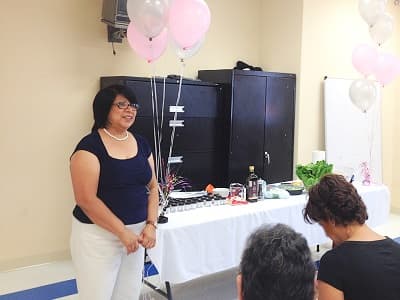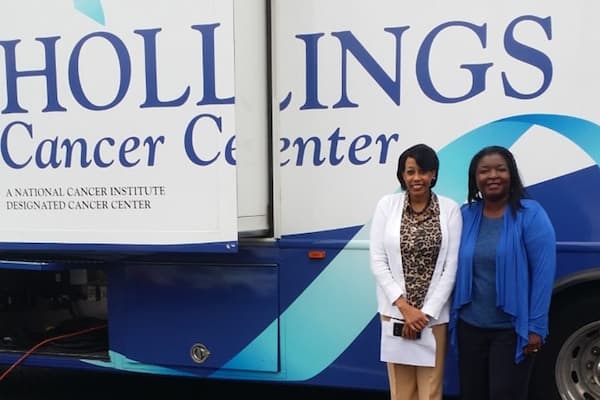Awardee Success Stories
The following are highlights of success stories from National Breast and Cervical Cancer Early Detection Program Awardees. For the full collection, visit the CDC’s NBCCEDP’s website.
Staff at the Mountain Park Health Center in Phoenix, Arizona, needed training on how to navigate patients so that they get breast and cervical cancer screenings. With help from the Well Woman HealthCheck Program, staff at the health center created a detailed process for patient navigation. The standard operating procedures show a patient’s navigation journey from her enrollment in the program through completion of screening and diagnostic follow-up in a way that is easy to understand. The streamlined navigation process provided the foundation for staff training. Read more
Women who live in shelters for homeless or battered women, rehabilitation centers, and prison release homes are some of the most likely to never have had a mammogram. Women who aren’t screened for breast cancer as recommended are more likely to have breast cancer found at a late stage, when it’s harder to treat. Read more
The Wilma P. Mankiller Health Center is in a very rural area of northeastern Oklahoma. Many women there have low incomes, causing challenges to screening for cancer. Read more
The Oglala Sioux Tribe lives mostly in Oglala Lakota County, South Dakota. The county spans 3,500 square miles and has the highest poverty rate of any county in the United States. The Pine Ridge Hospital, operated by the Indian Health Service (IHS), is the only hospital in the area that provides mammograms. Its Women’s Clinic provides mammograms and cervical cancer screenings. The Kyle Health Center, 72 miles away, also provides cervical cancer screenings. Read more
On March 14, 2020, the governor of Guam declared a state of emergency in response to COVID-19. The Guam Breast and Cervical Cancer Early Detection Program, an awardee of CDC’s National Breast and Cervical Cancer Early Detection Program, put its services on hold until May 1. Before the program could offer cancer screening services again, it had to make sure women could get screened safely. Read more
The Kalihi-Palama Health Center in Hawai’i is a federally qualified health center that serves a community of about 60,000 people. Most people in this community (84%) are Asian American or Pacific Islander, and almost three-quarters have a low income (at or below 250% of the federal poverty level). Filipino women have the highest rates of cervical cancer in the United States, and many Filipino people use the health center. Although the health center offers free and low-cost breast and cervical cancer screening tests through the Hawai’i Breast and Cervical Cancer Control Program, few women were getting screened. Read more
A 43-year-old woman in Tippecanoe County, Indiana, visited the RIGGS Community Health Center. She wanted to talk to a doctor about a problem with vaginal discharge. Clinic staff noted she was past due for her cervical cancer screening test. When they brought this to her attention, she got the screening done at the same visit. Read more
Women who live on Indian reservations and in rural areas of Michigan’s Upper Peninsula often find it hard to get screened for cancer. Many women in these communities have low incomes. They often live more than 30 minutes away from a screening facility and have little or no access to public transportation. Read more
In March 2020, the COVID-19 pandemic changed health care in Iowa. Women who were enrolled in the Iowa Department of Public Health’s Care for Yourself program (an awardee in CDC’s National Breast and Cervical Cancer Early Detection Program) couldn’t get routine breast and cervical cancer screenings. Some doctor’s offices were closed or were seeing fewer patients. Also, women said they were afraid it wasn’t safe to go to the doctor. So at the end of March, the program in Butler County had screened only 60% of the women it had planned to screen for the 2020 fiscal year—and it only had 3 months left. Read more
Doctors at Primary Health Care, a federally qualified health center in Iowa, have a limited amount of time to spend with each patient to discuss colorectal cancer screenings. To address this, clinic staff developed a new pre-visit process. The day before scheduled appointments, they wrote the names of patients who needed to be screened for colorectal cancer on a white board in the nursing station, and a staff member was assigned responsibility for each patient’s screening. Read more
Over 200,000 women are diagnosed with breast cancer each year, and incarcerated women face unique risks associated with poor access to health care. Many women who are in jail in Kansas are not up to date with their mammograms when they are released. To address this need, the Kansas Breast and Cervical Early Detection Works Program invited community health workers from Grace Med to provide educational seminars about the importance of cancer screening and help enroll incarcerated women in the program. Read more
The tribal-run White Eagle Health Center plays an important role in the Ponca Nation community in rural Oklahoma. It offers health care that respects Native culture and traditions. However, the clinic was struggling to improve its breast cancer screening rates. Read more
The Kentucky Women’s Cancer Screening Program staff wanted to find a business to work with in an area where breast or cervical cancer screening rates were low. They wanted to choose a business that employed women who have a low income or don’t have health insurance. Since the local area (Frankfort) had low screening rates, they decided Frankfort would be an ideal place to start. Read more
In 2017, fewer than one-third of the women patients at the Oaklawn Medical Group Olivet clinic had been screened for cervical cancer. Two years later, more than half were up-to-date with their screenings. Read more
The Nevada Division of Public and Behavioral Health and The University of Nevada in Reno conducted a study that looked at how to lower medical costs. The study found that community health workers (CHWs) reduced cost while improving patients’ experiences. Read more
When patients visit a health clinic, they often have limited time and many things to talk about. Doctors have to identify preventive care needs like cancer screening quickly. Having a process in place to remind doctors to talk to their patients about cancer screening tests can help clinics serve their patients better. The New York State Department of Health helps make this happen with funding from CDC’s National Breast and Cervical Cancer Early Detection Program. Read more
Getting patients screened for cancer can be hard when they don’t speak English, have limited health insurance coverage, and don’t know where to go for medical care. In Philadelphia, one project used patient navigators to help local immigrants overcome these barriers as a way to increase screenings for breast and cervical cancer.
In 1991, South Carolina was one of the first states to receive funding through the National Breast and Cervical Cancer Early Detection Program. Over the past 29 years, the state’s screening program, Best Chance Network, has screened about 135,000 women and found more than 1,600 invasive breast cancers, 550 pre-breast cancers, 1,100 invasive cervical cancers, and 3,200 pre-cervical cancers.
Image Credit: Centers for Disease Control and Prevention

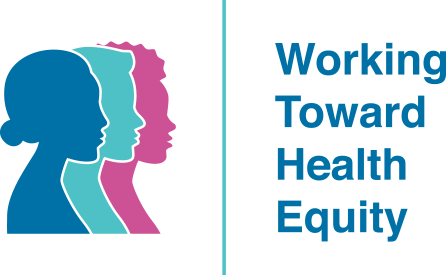
Copyright © 2021, National Breast and Cervical Cancer Early Detection Program.

